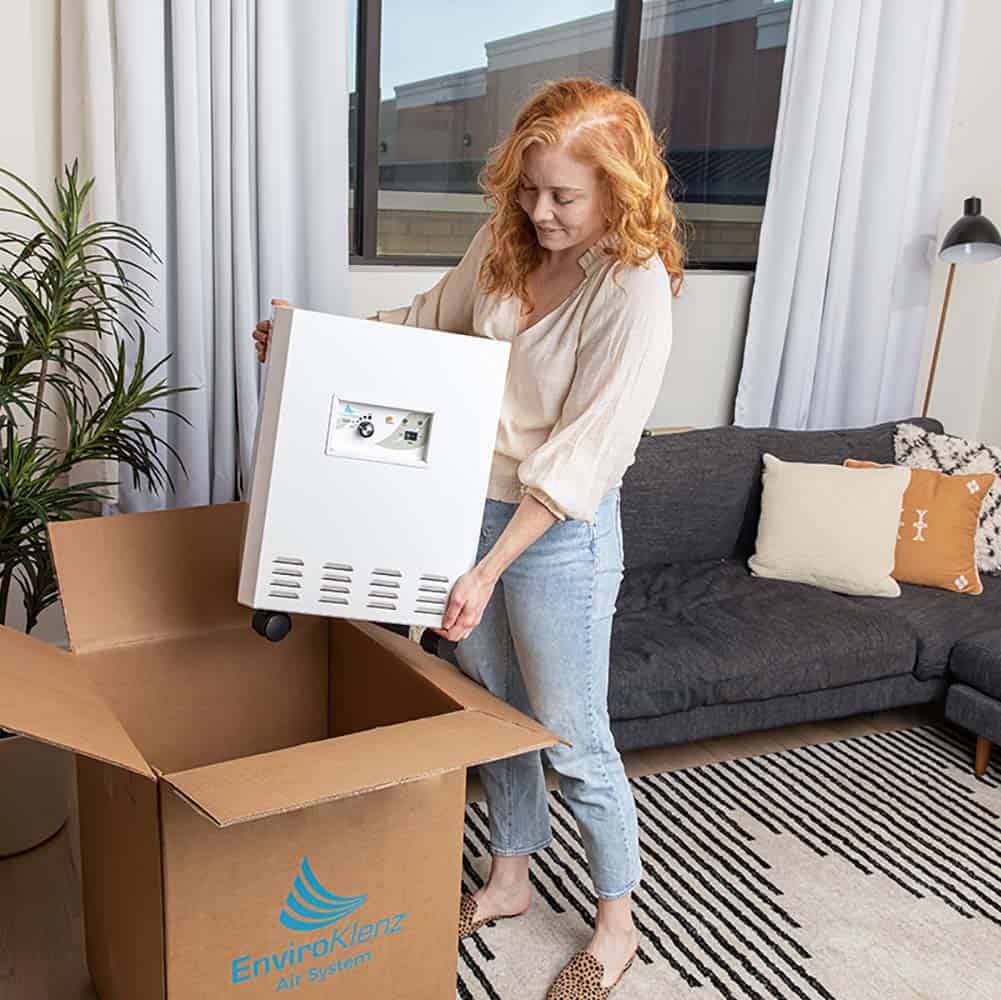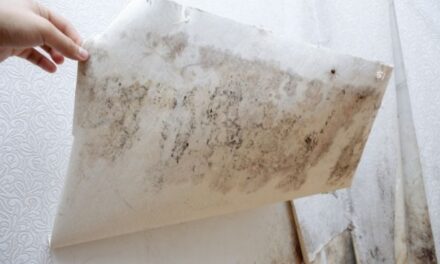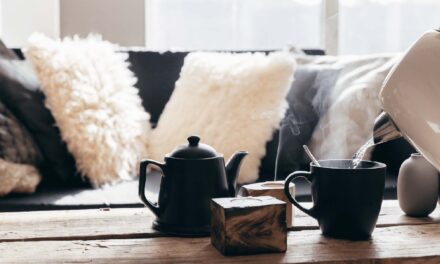How Does Mold Grow Indoors?
How Does Mold Grow Indoors?
Mold is a gross, smelly issue that no homeowner wishes to deal with. Not to mention, it causes health issues when exposed to. Find out how hidden mold can grow its way into your home and affect you and your air quality.
How Does Mold Grow Indoors?
Mold. A foul-smelling, sneaky menace, this fungal villain has a knack for growing in your home without a proper invite. Mold is a silent danger that affects many homes, whether on that old loaf of bread you forgot about in the back of the pantry, or along the edges of your bathroom grout after months of soap scum and steamy showers. Worst of all is the hidden mold that makes its way behind walls or underneath flooring, which often goes unnoticed until it’s too late.
Simple cases of mold growth can be easily cleaned away, like on food or washable surfaces, however other cases of large-scale mold growth take greater effort to completely remedy. And what about the side-effects of this mold on you and your household? How do you know if this indoor mold is making you sick?
Let’s take a look at typical household molds, symptoms and health effects of mold exposure, and how to get rid of this dirty, dangerous intruder in your home.
COMMON HOUSEHOLD MOLD
Mold is a type of fungal organism that grows both outdoors and indoors, blooming from airborne mold spores that seek out ideal places to germinate and spread. While outdoor mold is completely natural and very necessary for breaking down plant and animal matter, indoor mold is often seen as more of an unwanted disturbance over anything else. A few of the most common types of indoor molds found in the home include:
- Cladosporium – Brown, green, or black in color, this mold is commonly found on wood, carpets, or fabrics.
- Penicillium – With a fuzzy blue, green, or yellow appearance, this mold is common to surfaces affected by water damage.
- Aspergillus – Green, white, or gray powdery texture with dark spots characterizes this mold species, and it forms on fabrics, walls, attics, and basements experiencing poor ventilation.
- Stachybotrys chartarum – Also known as ‘black mold’, this toxic mold species thrives in moist, cellulose-rich buildings with humidity and water damage.


The perfect breeding ground for mold is somewhere humid or moist, with little to no airflow, and often dark. Think of basements, attics, laundry rooms, and bathrooms, which typically experience the most moisture or lack of proper ventilation. Mold spores can enter through openings of doors, windows, and HVAC or exhaust fan vents, as well as attach to clothing, bags, and other belongings that came from outside. Once indoors, the mold spores travel through the air and latch onto any prime growth spot they can find.
WHAT TYPES OF MOLD ARE HARMFUL?
It is a common belief that the dreaded ‘toxic black mold’ found in any home is worst-case-scenario due to the health dangers of this fungus. Despite what you may think, no specific mold is much more ‘harmful’ than another. Certain types of molds are classified as toxigenic molds, as they release mycotoxins that trigger allergic reactions and exposure symptoms. Nonetheless, all molds should be treated equal in the sense that you want to remove any type found in your home as quickly as possible. Even molds classified as “non-toxic” can still trigger allergy symptoms and irritation from exposure.
It is typical for every home to have at least a little mold, whether on a surface or in the air. It can come through doors and windows, or on your clothes and belongings as you come indoors, and it can further form via humidity from poor ventilation or moisture from unexpected flooding or water leaks. Allowing these optimal conditions to exist is what leads to mold growth and mold exposure within your home, which is why it can be so valuable to know exactly how to prevent future mold growth.
WARNING SIGNS OF MOLD TOXICITY
Signs of mold exposure can resemble typical allergy symptoms for most. In cases of severe sensitivity to mold or history of other respiratory illnesses like asthma, reactions may be worsened. There is no set guideline for how much mold exposure is harmful, but the degree of sensitivity to mold can determine how severe someone’s reaction is.
Here’s a list of common symptoms of mold exposure:
- Coughing & throat irritation
- Wheezing or shortness of breath
- Itchy, watery eyes
- Sneezing
- Runny nose
And in extreme cases,
- Headache
- Fever
- Fatigue and weakness
Experiencing any of the above symptoms, especially for a prolonged period of time, can be a strong indicator that you may need to check your home for mold. Living with these symptoms is not ideal, and promptly getting rid of mold growth can reduce these health effects sooner rather than later.
FINDING MOLD IN YOUR HOME
Detecting mold in your home can be tricky if it is not visibly showing. With hidden mold behind walls, underneath flooring, or in areas of the house like attics and basements that get a little less attention throughout the year, you will want to utilize other tell-tale signs that can indicate mold growth.
First off, the pungent smell of mold is hard to miss. A musty, earthy odor is produced by mold, which can often indicate to homeowners that mold is growing in their enclosed space. While it’s displeasing to the nose, this odor can also be an allergy trigger and something you want to remediate quickly. Experiencing exposure-related symptoms is a second major indicator of mold growth within your home, as these unavoidable reactions are a good hint that something moldy may be hiding beneath the surface.
Can I stay in my house with mold?
A little mold isn’t something to panic about if it is manageable enough to clean up. However, you may want to consult a doctor on what to do if you are experiencing severe symptoms from mold exposure; they may suggest you stay somewhere else until mold removal is fully complete, depending on the severity of your symptoms and severity of the mold case. The key to feeling better is to act immediately. Whether that be your own cleaning efforts or the help of a professional, you want to get rid of any mold so that health effects and home damage don’t persist!
GETTING RID OF MOLD FOR GOOD
It is best practice to clean away mold at its first signs so that you don’t accumulate a larger, more costly problem later. Wipe away washable hard surfaces with a non-toxic cleaner for any physical mold. In the case of post-flood or leak damage, mold growth on carpet, insulation, and drywall will most likely result in removal and replacement of these structural essentials. Do your best to thoroughly dry out any surface or item that you have cleaned mold from, as this prevents regrowth. If you have mass growth of mold beneath walls or flooring, consulting with a professional remediation service is best.
Mold & Indoor Air Quality
Mold growth has a lot to do with the quality of air in your home. Factors like air flow, ventilation, and humidity can easily determine whether a space in your home is suitable for mold growth. Not to mention, mold spores travel through the air before attaching to an optimal surface. Treating mold at its source begins with proper air quality solutions!
Air purifiers are great home additions for the treatment and prevention of mold. Older HVAC systems can lack in their air flow and ventilation capabilities, which is where a portable air purifier can pick up some of the slack. It is also important to remember that mold spores can still exist in an enclosed air space, even after professional remediation of physical mold growth. Having an air purifier to filter out mold spores and boost air exchanges within a room reduces humidity and prevents mold spore germination.
The EnviroKlenz Air System Plus filters out airborne mold spores and mold-generated VOCs through its patented earth-mineral technology and multi-filtration process. It further protects against mold with the added germicidal irradiation of UVC bulbs, which deactivate fungal microorganisms like mold spores and internally clean the system. The Air System Plus works to capture and destroy existing mold, along with preventing future mold and the side effects it produces. This powerhouse purifier can also quickly remove mold odors from an indoor air space, for a breath of fresh, odorless air.
Preventing mold in your home
Removing mold is one thing, but preventing it is another. Always clean and dry surfaces and spaces that were exposed to moisture and mold growth. Any leak, big or small, could be the beginning of a giant mold bloom, which is exactly what you want to avoid! Controlling humidity and ventilation is also a must; regular use of an air purifier and a dehumidifier are two air-specific actions that can prevent mold growth. Try placing these devices in the basement, kitchen, or near the laundry room where extra humidity and moisture accumulate. Natural ventilation through open doors and windows can also offer an escape for trapped hot air or steam, as well as provide air flow to a stagnant room.
Follow the right steps towards healthy indoor air, and you can guarantee a fresher, mold-free environment to thrive in. It just takes some preventative measures, along with common knowledge about the nature of mold growth, and you’re set to tackle any daily fungi thrown your way!

Mobile UV Air System
- Patented technology that captures & destroys viruses, bacteria, allergens, and other chemical toxins
- UVC protection for added germicidal defense
- Never releases chemicals or byproducts back into the air, making it non-toxic and safe
$799.00


Mobile UV Air System
- Patented technology that captures & destroys viruses, bacteria, allergens, and other chemical toxins
- UVC protection for added germicidal defense
- Never releases chemicals or byproducts back into the air, making it non-toxic and safe
$799.00
EnviroKlenz® Medical Disclaimer:
“Any information that is provided on this website is not for the use by any commercial or personal entity without expressed written consent of the blog author. The material and statements illustrated within this blog are not intended to diagnose, treat, cure, or prevent any diseases or medical conditions. Nor does the author in any way guarantee or validate the validity, totality, or efficacy of any claims and will therefore not be held responsible for the content of any claims. Always consult your medical physician for any specific medical advice or recommendations.”




Comments
Post a Comment